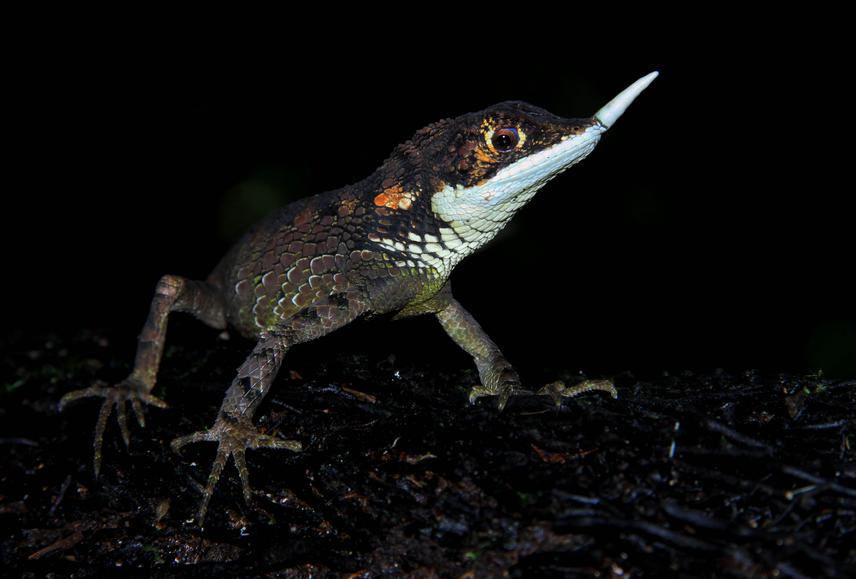Suranjan Karunarathna
Other projects
24 Jan 2024
Taxonomy, Ecology, and Distribution of Geckos an Outside the Protected Area Network of Sri Lanka: With Conservation and Management Implication
Sri Lanka is a biodiversity hotspot rich in reptile diversity and endemism. Among reptiles, Agamids have an extraordinary evolutionary history in the island and have under done insular radiation. Nonetheless ~60% of the island’s species are globally threatened owning to habitat loss. Through systematic surveys, I will identify agamid hotspots within Sri Lanka’s conservation gaps (my preliminary surveys have documented agamid occupancy outside protected areas) and local and landscape-scale predictors of agamid diversity. The knowledge base I develop will help conservation authorizes to promote conservation outside protected areas, restore degraded ecosystems and trees-outside-forests suitable for agamid life-histories, and inform science-based conservation actions.

Ceratophora stoddartii
Nineteen (90%) out of the 21 Sri Lankan Agamid species are endemic and nearly 60% of these are threatened with extinction. Several species are restricted to single small (<100 km2) localities (‘microendemics’), but due to ever-increasing habitat loss, even broadly-distributed species may undergo decline in future. In light of this backgorund, myself and my co-investigators, Dr. Thilina Surasinghe (Bridgewater State University, MA, USA) and Dr. Ruchira Somaweera (CSRIO, Australia) have identified three critical research gaps that impede agamid conservation in Sri Lanka. Firstly, we have minimal information on Agamid distributions outside protected areas (trees-outside-forests), including novel ecosystems sustained by substantial anthropogenic influence. Numerous studies have underpinned the importance of trees-outside-forests for biodiversity conservation elsewhere, therefore, systematic surveys in unprotected landscapes are prudent. This need is more urgent and prominent in the biodiversity-rich, but also rapidly urbanizing wet zone of Sri Lanka where the lowlands and three mountainous regions (Central Highlands, Rakwana Range, and Knuckles Range) harbor>80% of Sri Lankan Agamids. Secondly, almost all Sri Lankan Agamids lack detailed ecological data that are salient in making informed decisions on habitat management and wildlife policies. Thirdly, conservation assessments of Sri Lankan Agamids are based on neither quantitative information nor spatially-explicit distribution mapping. Scientifically-robust, systematic, and spatially-explicit data are imperative to make informed conservation decisions and policy revisions.
In this study, we will conduct extensive field surveys covering several wet-zone ecoregions. In a given ecoregion, we will survey a total of 12 spatially-independent locations; these survey locations will represent different major habitat types. We will survey 12 locations that are stratified across different habitat types found outside protected areas in a given year. Our survey will span for two years, and in each year, we will cover all 48 sampling locations once, and repeat the same in the following year. After the surveys, we will synthesize the following information: Identification of critical Agamid habitats outside protected areas of the wet zone; Detailed information on Agamid ecology; Assessment of their conservation status; and Recommendation for conservation of Agamids in Sri Lanka.